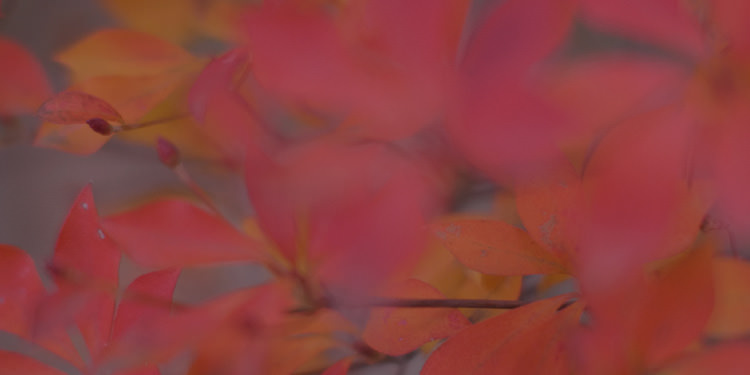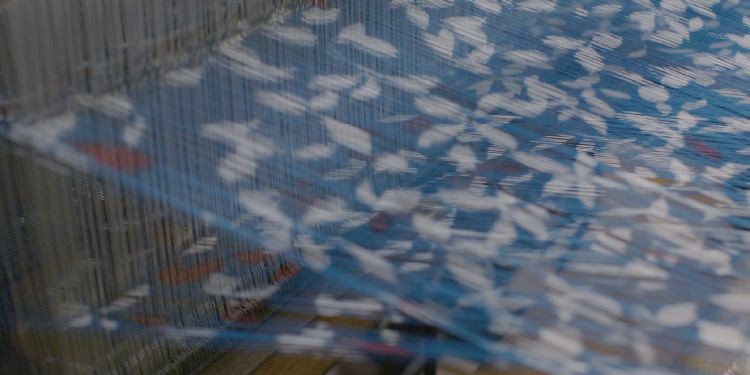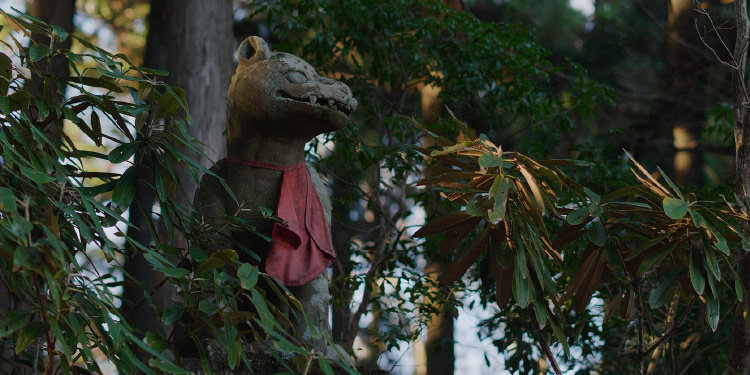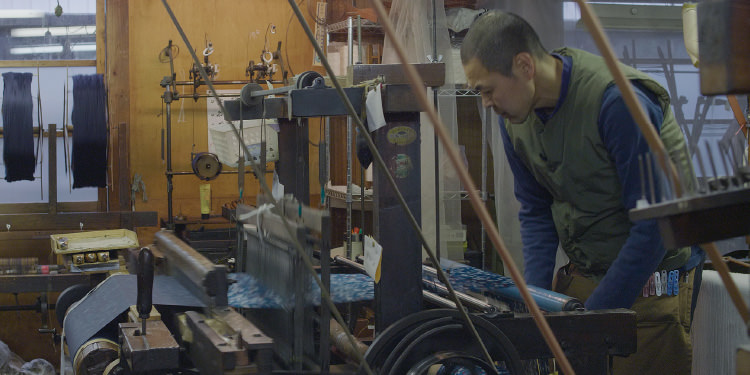

A large province once encircled the Kanto Plain. Musashi Province, or Musashi-no-kuni, covered what is now the 23 wards of Tokyo, almost all of Saitama Prefecture and part of Kanagawa Prefecture. Chichibu is located in what was the northwest corner of Musashi Province.
It takes about an hour and a half by train to get to Chichibu from Ikebukuro Station in Tokyo. Towering over the city, Mt. Buko greets you when you get to the station. While much of the mountain has been stripped away from mining for limestone, its silhouette etched against the morning haze has the gravitas of a sacred mountain.
Sericulture began in Chichibu during the Nara Period (710–784), and it was formerly a major producer of meisen silk textiles from the Taisho (1912–1926) to the Showa (1926–1989) periods. Meisen is a type of kasuri (also known as ikat) fabric, where the warp yarn features a print and temporarily woven weft yarn is taken out while being replaced with other yarn that is woven again. This style of weaving is also called hogushi ori (hogushi comes from the verb hogusu, which means to unravel or take apart). At the height of meisen, more than 800 weavers were counted here, and 70 percent of Chichibu’s population was said to be involved in the textile industry. Today, however, the number of meisen weavers can be counted on one hand. This important industrial craft is gradually disappearing together with kimono culture.


We came to visit Mr. Arai, a traditional meisen artisan at Arakei Textile. We previously introduced Ashikaga meisen, which is characterized by the frequent use of geometric patterns. In contrast, Chichibu meisen often uses flowers, plants and other motifs from the natural world in its patterns. Chichibu meisen also highlights silk’s lustrous quality by using different colors for the warp and weft yarns to weave iridescence into the fabric. This gives the movement of the drape a gorgeous shimmer effect of different colors.
On the suggestion of Mr. Arai, we tried weaving fabric after shifting half of the printed warp threads eight centimeters. This created a layered effect reminiscent of a double exposure for the pattern of the enkianthus perulatus shrub with red autumn leaves.
“The appeal of Chichibu meisen is its ability to create simple yet complex expression,” says Mr. Arai with unconcealed amusement. While the weaving had formerly been divided among other artisans, it is now a wholly family-run venture. His intellectual curiosity drives him to come up with more interesting creations.


Glancing at the household Shinto altar, we found the unusual talisman of a wolf. When asked about it, Mr. Arai told us that there were still people who worshipped wolves. In the past, wolves in Japan were regarded as beneficial to humans because they ate wild boar and deer that devoured crops. Wolves were called by the honorific name o-inu-sama and considered messengers of the mountain gods. Hearing the distant bay of a wolf from deep in the forest, people must have believed that wolves had mystical powers. Even so, the Japanese wolf went extinct around a hundred years ago.
The Chichibu Mountains spread out behind the city like a vast dark ocean. Mitsumine-jinja Shrine lies within these mountains of Okuchichibu. The entrance to the sacred space is guarded by stone wolves baring their sharp fangs. The mountain air enveloping the shrine complex cleanses the spirit.


The faith that has been a part of this land since ancient times retains a robust presence. But instead of a specific belief system, it is more like convictions that are a natural part of life. Everywhere you look there are small shrines dedicated to the mountain gods, and there is a pilgrimage circuit of 34 temples associated with the Goddess of Mercy. Shinto rituals and festivals take place at one place or another throughout the year, and folk arts such as taiko drumming and folk dancing are flourishing. At the very edge of Musashi Province, there are still people who revere the forest and put their hands together to pray to the mountain gods and wolves. These prayers, which have disappeared from our modern-day needs for food, clothing and shelter, are still rooted in this place.
“Prayers give humans a sense of serenity. I think this buttresses the instability of our hearts,” comments Mr. Arai with calm composure. The fresh water from the palm of the hand still flows forth from an ancient spring.
職種:店舗販売 / 営業 / 生産管理 / パタンナー / デザイナー
正社員登用、給与は経験により相談。月20万円以上。
年齢性別不問。
厚生年金、健康保険、雇用保険等完備。交通費支給、賞与。
ご希望の方は、メールにて履歴書と職務経歴書をお送り下さい。
通過者のみ面接の返信をいたします。なお募集の職種は時期によって異なる場合があるのでお問い合わせください。
*学生のインターンは随時可能ですので、希望者は面接いたします。
送信先メールアドレス:matohu@lewsten.com
◇ matohuの理念
「日本の美意識が通底する新しい服の創造」をコンセプトに文化や歴史を大切にしながら、現代人の心に響く魅力ある「デザイン」を生み出すこと。それを深い「言葉」で表現し、共感者の輪を拡げて行く「場」を作って行くこと。
この3つを通して、多様で心豊かな世界をともに作り上げることがmatohuのプロジェクトであり、理念です。
◇ 仕事のやりがいと人間的成長
まかされた仕事を自分の創意で工夫していける環境です。1Fはショップ、2Fはアトリエになっており、デザイナーと直接話しながらアイデアを実現していけます。また文化、歴史など幅広い知識を学ぶ機会も多く大人の教養と礼儀が身につき、人間的にも成長できます。
人の心に彩りを添えるデザインを生活のなかに!を合い言葉にこれから世界に向けて発信するmatohuのスタッフを募集します。